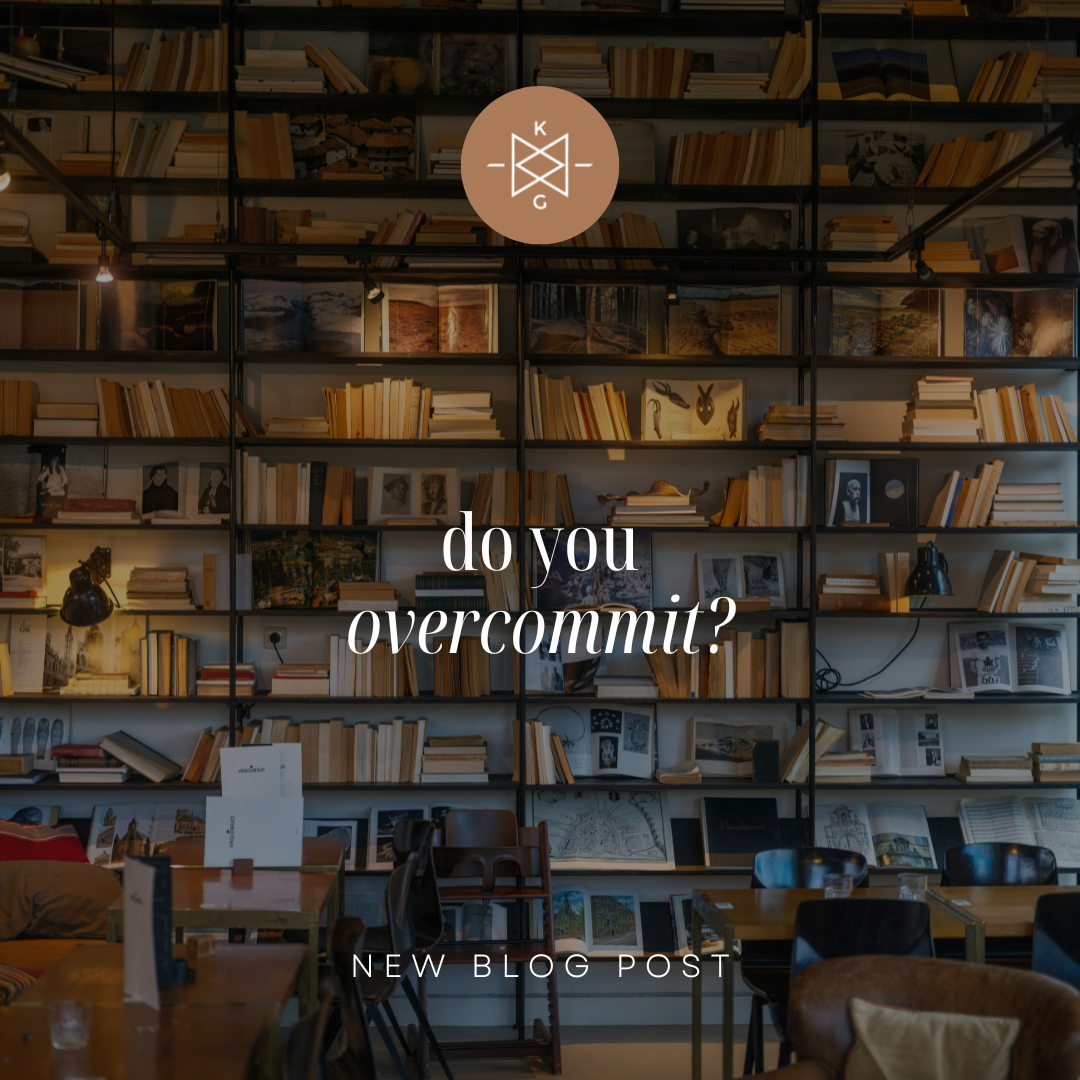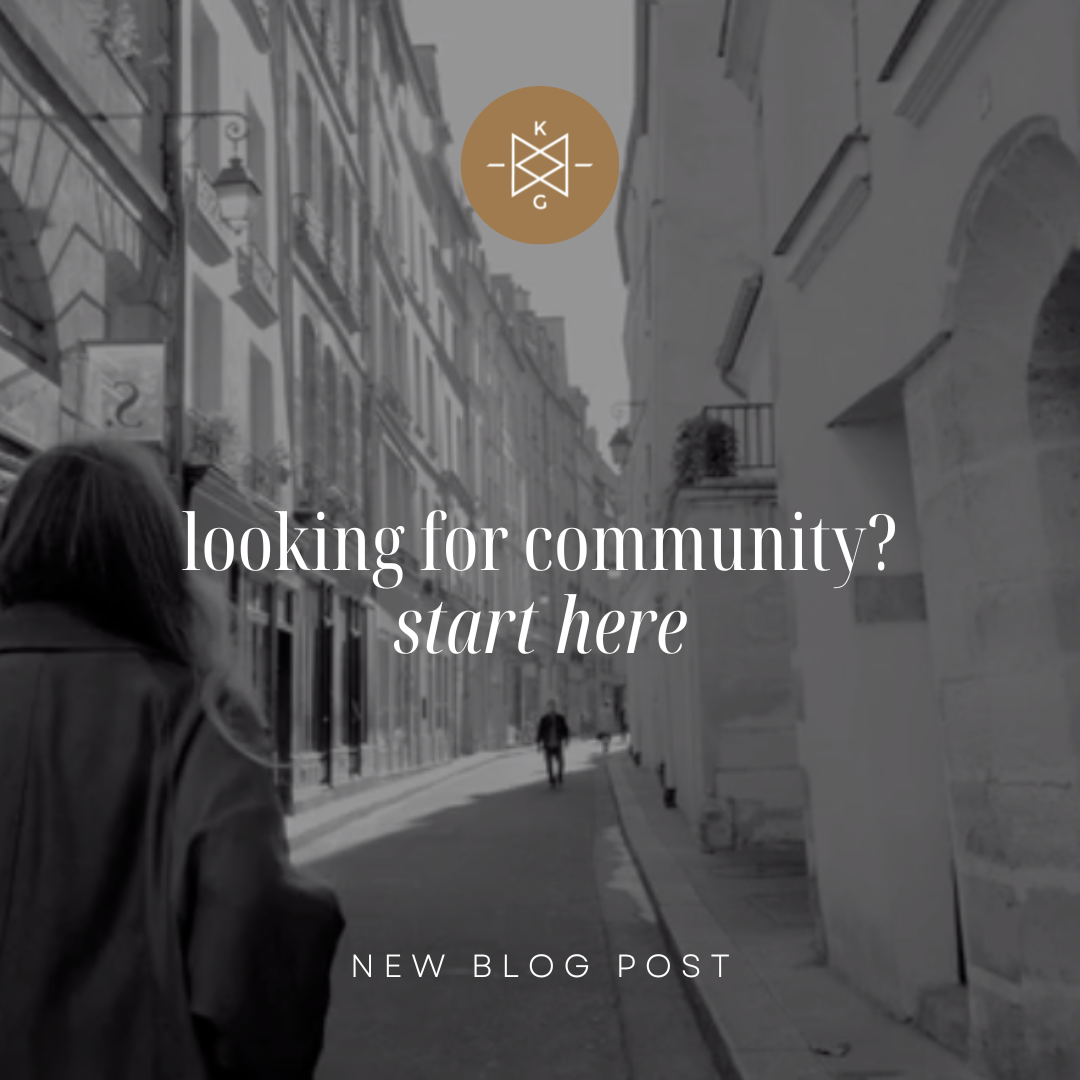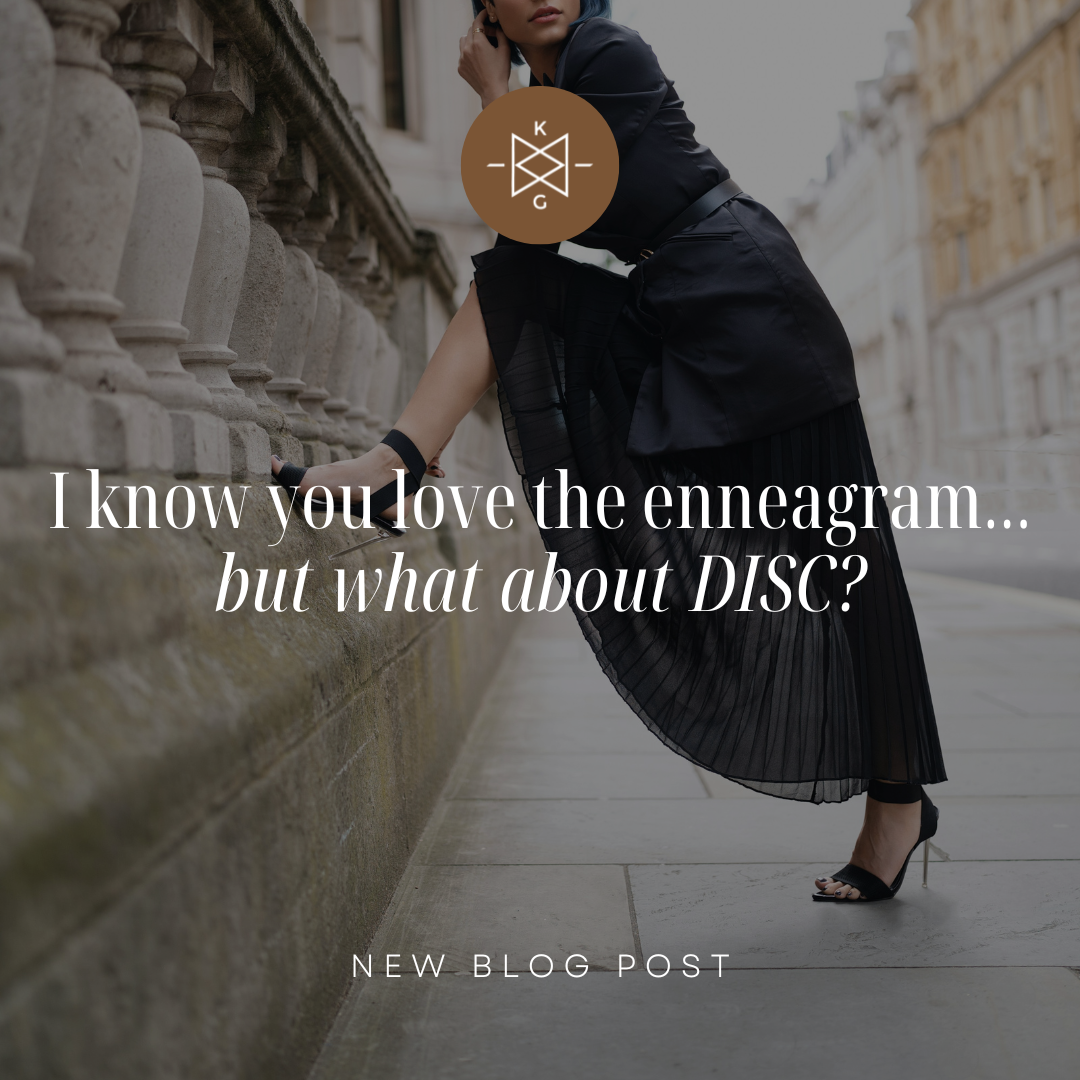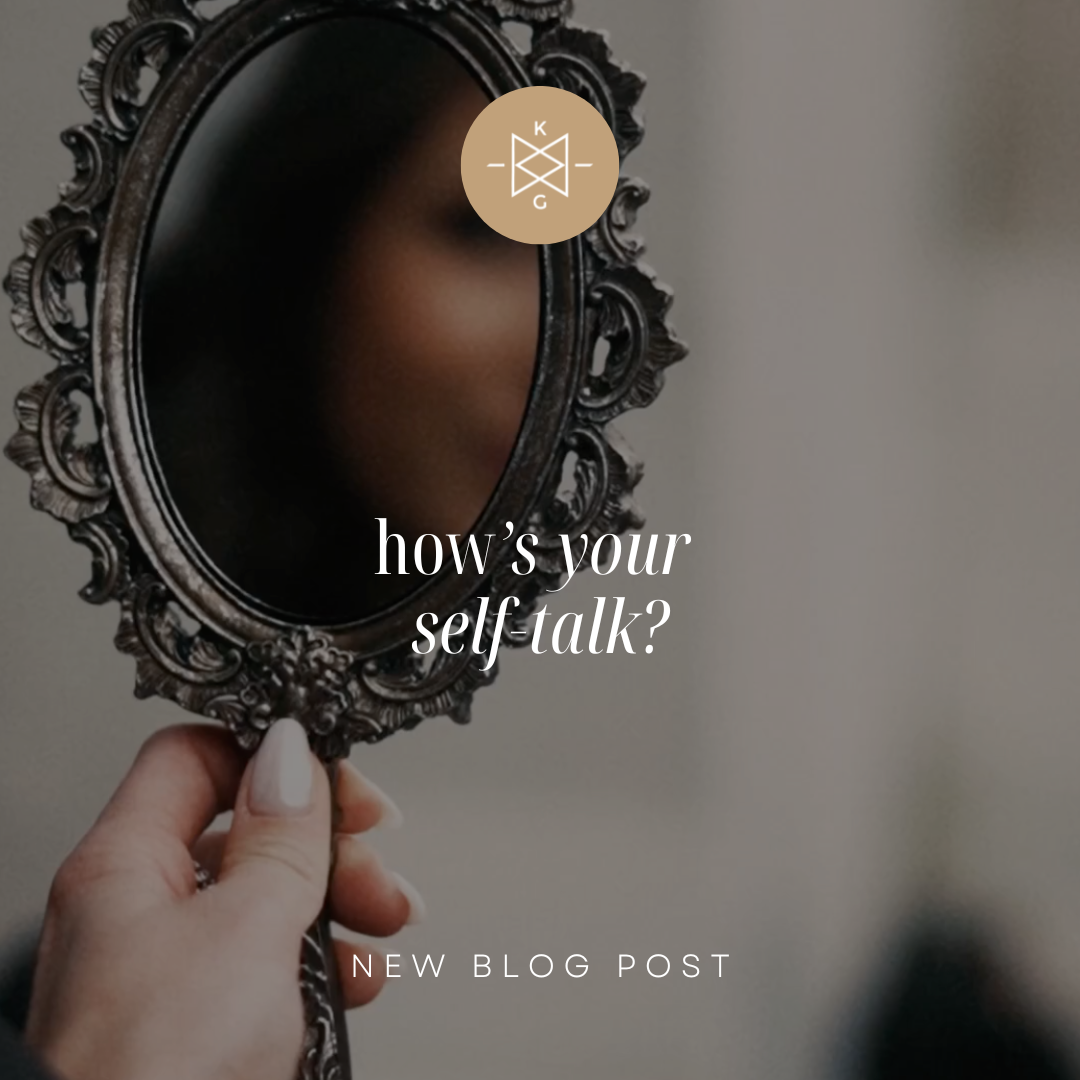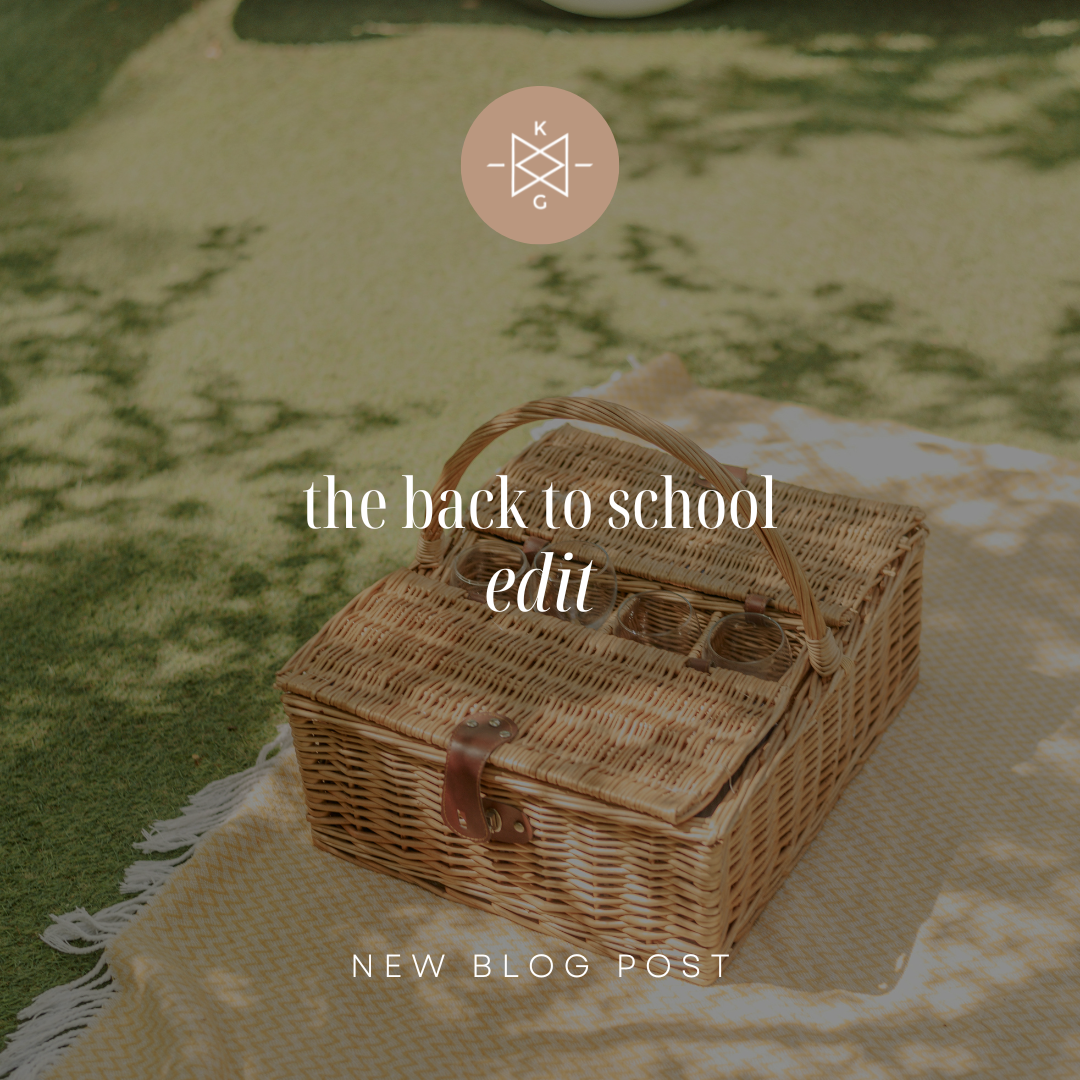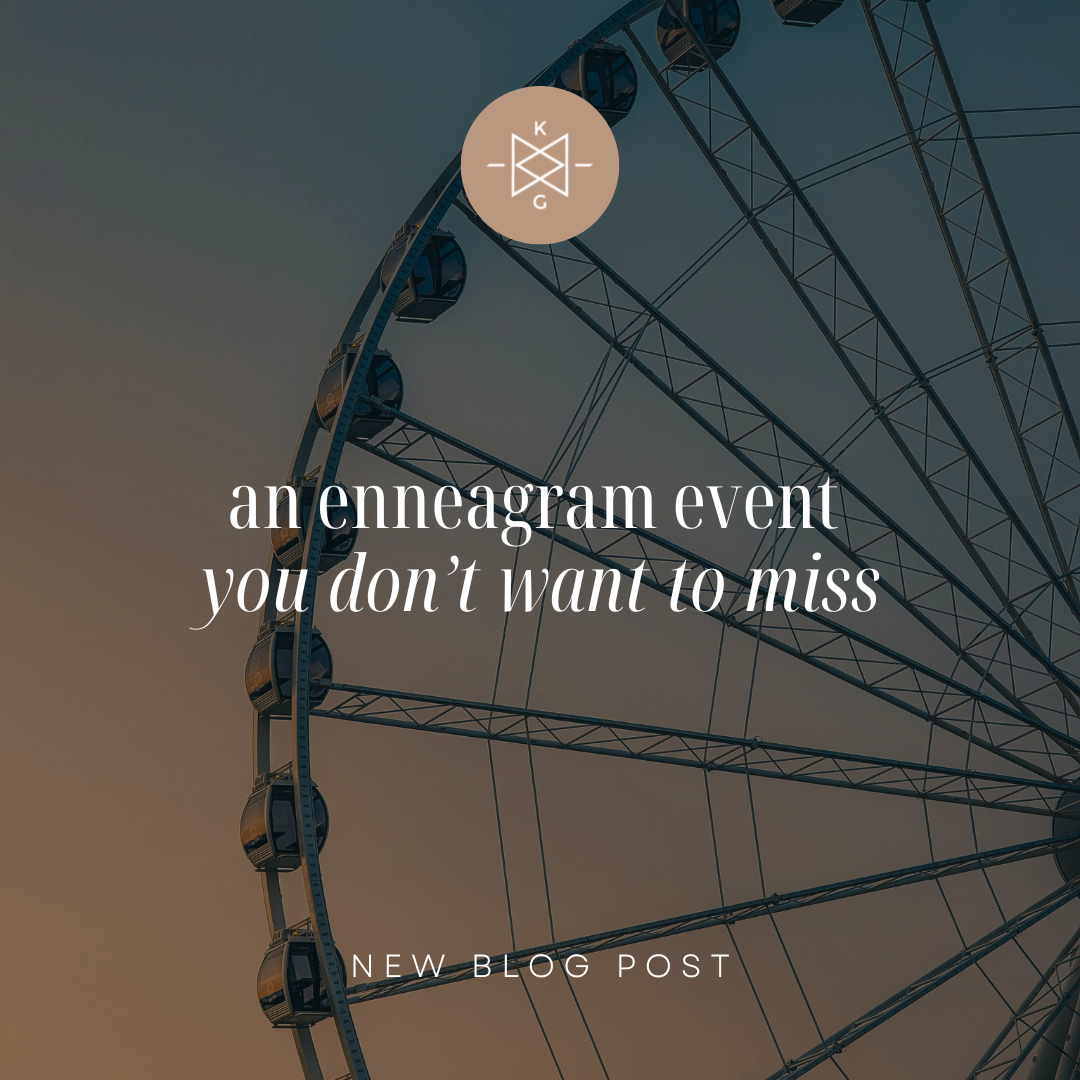
The Blog
Recently Featured
All Blogs
I know you love the Enneagram...but what about DISC?
"To be yourself in a world that is constantly trying to make you something else is the greatest accomplishment.”
– Ralph Waldo Emerson
Guess what??? In less than three weeks, I’m hosting a workshop with my friend and business coach, Chris Weinberg, of Well-Coached Consulting. It will be a morning spent unpacking two powerful personality assessments, DISC and the enneagram, and how you can benefit from both in your life, work, and relationships. For all the dirty details and to register, click here.
I know, you hear me talk ad nauseam about the Enneagram. We have a thing and it’s strong. However, I’ve learned so much over the past five years about DISC while working with Chris and it’s been tremendously helpful. Also, if you know me, you are aware of my both/and approach to life as opposed to either/or. I like the gray, friends. Perhaps it’s my enneagram four showing, but I don’t mind sitting in the tension that allows two truths to exist at all.
So, we’re putting it all together on Friday, Sept. 20th in the heart of downtown Nashville. It’s gonna be FUN.
Here’s the soup to nuts on both these systems and why they are so useful.
Let’s talk DISC…
The DISC assessment is based on the work of psychologist William Marston, who developed a theory of personality traits in the 1920s. DISC stands for Dominance, Influence, Steadiness, and Conscientiousness. These four dimensions represent different behavioral styles:
Dominance (D): Focuses on results, is direct and assertive, and tends to be decisive and driven by challenges.
Influence (I): Prioritizes relationships, is outgoing and persuasive, and enjoys collaboration and social interaction.
Steadiness (S): Values consistency, is patient and supportive, and prefers a stable and harmonious environment.
Conscientiousness (C): Emphasizes accuracy and detail, is analytical and organized, and follows rules and procedures closely.
DISC assessments typically involve a questionnaire that measures an individual’s tendencies across these four dimensions, resulting in a profile that highlights their predominant behavioral style.
And of course, my beloved Enneagram…
The Enneagram is a personality and character typing system that categorizes people into nine different types, each with its own core motivations, habits of attention, fears, and desires. These types are:
Type 1 – The Improver: Principled, purposeful, and self-controlled.
Type 2 – The Helper: Caring, generous, and people-pleasing.
Type 3 – The Achiever: Success-oriented, adaptable, and driven.
Type 4 – The Romantic: Sensitive, expressive, and introspective.
Type 5 – The Investigator: Analytical, innovative, and private.
Type 6 – The Loyalist: Responsible, anxious, and security-seeking.
Type 7 – The Enthusiast: Spontaneous, versatile, and fun-loving.
Type 8 – The Challenger: Assertive, confident, and confrontational.
Type 9 – The Peacemaker: Easygoing, accommodating, and conflict-averse.
The Enneagram not only explores typology, it gives you an intricate roadmap for growth and development to put into immediate practical use. It’s dynamic, providing a multifaceted view of personality.
In our time together, Chris and I will not only teach the basics of both systems side by side, we will unpack the key differences and similarities between the two, how they can be used personally and professionally, and which one you should choose (if you’re the either/or type ;).
Don’t miss this special opportunity to sharpen your life tool-kit, meet some like-minded folks, and enjoy a lovely Friday lunch in downtown Nashville.
I can’t wait to see you there! Seats are limited…don’t sleep on this amazing opportunity.
How's Your Self-Talk?
"Argue for your limitations and you get to keep them.”
-Elizabeth Gilbert
For decades, I told myself a story that I was somehow wildly deficient. Everyone else made it out of labor and delivery just fine. Not me. I was flawed and had to work overtime to measure up—to show up.
What facts supported this story? What was the payoff for believing it? These are two questions I didn’t start asking myself until my late 20’s. And man were they gnarly narratives to untangle.
We unconsciously adopt self-defeating narratives early on in childhood in order to make sense of core wounds and our childish beliefs about those wounds. I came to the binary conclusion about my own that paid off in dividends because it helped me overcompensate and avoid its possible effects moving forward. How? By armoring up with perfectionism and the insatiable desire to prove the world wrong: I am indeed enough and will work realllllly hard to show you!
This worked well until it nearly killed me.
You and I are very much alike in that we both live out of stories— some of them life-giving, some of them need serious editing.
Editing these stories might sound like a heavy, quasi-nebulous lift for most of us. Want to know the best and easiest way to start this process? Your self-talk. The stories we have about ourselves and the world around us are colored in with constant commentary and self-talk. And though we are each unique, the thing that I’ve learned working with hundreds of people throughout the years is striking: we largely pretty much suck at self-talk.
When I started to study and practice self-compassion, I became aware of the aggressive nature of my self-talk. Hell, I don’t think I’d even talk to someone I dislike with the same harsh tenor I do myself. When working with clients who are on the path towards healing this relationship with self, I tend to hear a familiar limitation, “But saying really nice things to myself doesn’t feel believable!”
I get it. It’s hard to go from, “you’re just not enough,” to “You’re so amazing and worthy of love!” For most, this doesn’t feel authentic.
Don’t worry, it doesn’t feel natural because your brain isn’t used to it. It NAILS the inner critic though. It’s not about getting it perfect, it’s about becoming aware of your thoughts and self-talk and practicing a higher quality within them.
It’s moving from the scarcity of, “There’s never enough time to do what I need to do” to a less charged and more neutral, “I’m giving myself grace to do my best right now.”
We don’t have control over all of our circumstances in life. We do, however, have control of how we talk to ourselves. This matters big time.
This week, play around with (a) becoming aware of your thoughts as you have them, and (b) practicing tiny shifts in order to help you feel better emotionally (and physically). It’s subtle, so don’t go looking for a quick fix here.
Are you ready to shed the weight of your nagging inner critic? I know, she’s heavy. What dialog might promote willingness and curiosity in your life today?
How do you lead?
"One isn’t necessarily born with courage, but one is born with potential. Without courage, we cannot practice any other virtue with consistency.”
-Maya Angelou
If there is anything I've learned from my jerky, stop and go journey of emotional and spiritual integration, it is the importance of ritual—or practice. How do I take full responsibility for my experience, and in doing so, create the life I desire as opposed to a life I settle for? It’s the difference between leading your life and merely managing it. I believe we close this gap by developing self-awareness through simple practices.
Chances are, if you’re reading blogs about emotional health and self-development such as this one, or have sought therapy at some point, you’re a leader. Why? Because you are actively participating in cultivating the hidden potential in your life. You’re finding your edge and sharpening it.
I like Brené Brown's definition of a leader in her book, Dare to Lead: “Anyone who takes responsibility for finding the potential in people and processes, and who has the courage to develop that potential.”
Sounds doable, right? Within reach? Without a doubt, I believe it absolutely is.
Hold up, though. If you and I are going to be leaders, developing and speaking into the lives of others, don’t we first need to lead our own lives fairly well? Otherwise, we prop up a flimsy façade of ego and lack the deep roots of character and self-awareness necessary to sustain leadership from a place of integrity.
I tend to love the whipped up pace marked by the end of summer—a return to school, work deadlines, structure, and a bit of normalcy. It’s the perfect opportunity to connect to the potential bubbling up under the surface and lead my days from a place of intention instead of reaction. So how do we do this? I’m convinced the unsexy truth is we get really good at practice.
Practice what??
I’ve got three uber simple rituals for you to practice this week.
First thought: When your eyeballs pop open first thing in the morning, guess what? A first thought also starts to percolate. That first thought has the power to steer your day either north to Mt. Abundance, or south, to Lake Scarcity. You have creative license to craft that thought, coloring the trajectory of your day. If that thought is, “I’m just so tired and didn’t get enough sleep.” Guess which direction your headed? Yep…down south. You’re in the driver seat though, so take a minute, first thing in the morning, to carefully choose the thought that will direct your day in the right direction. The scenery is much better on this route, I promise.
Gratitude: Throughout the day, take three one-minute breaks and identify at least one thing you are grateful for in the moment. Meal times are ideal to practice this as we (hopefully) slow down and hop off the treadmill of our day. The goal here: keep them simple (i.e. lungs that work, food to eat, a new day, a job or hobby, a dear friend).
Belly-breathing: It’s fascinating to me that as a culture, we largely suck at breathing. Our overall vitality and quality of life immediately improves when we practice deep, steady breathing. But guess what? We’re just. so. busy. I’m calling BS on busy. For at least one minute each day, practice slow, belly-breathing. Breathing into our belly, or body’s center of intelligence, brings a tangible feeling of groundedness. Place your hand on your belly and feel it rise and fall, like a cashed-out kid after a day at the trampoline park. We’re often so disconnected from our bodies, which stunts us from experiencing the fullness of each moment. Belly-breathing is the quickest way to connect us back to presence and the intelligent knowing of our bodies.
If these seem too pedestrian—or basic, for you as you step into CEO of YOU, guess what? Get over it. Tough love, my friend. The best musicians in the world got that way because they nailed the basics, and still practice them. We’re all guilty of getting in our own way by not practicing what we preach. I’m pretty sure I wrote the book on self-sabotage. However, now is the time to return to the basics and start leading a life that inspires hope and desire.
My challenge to you is this: have the courage to do the small things that lead to big change. Inspire yourself so much that others start to lean into your light and see themselves in a new, empowered way. I’m pretty sure that’s called an icon. Greatness starts off small and gradually grows in that light.
The Back to School Edit
“Our human (egoic) tendency is to want to feel good (and to avoid feeling bad) about ourselves. But without a way of recognizing, accepting, and addressing all of who we are, including the Shadow side and difficult parts of our experience, our personal growth stops and we remain asleep to our potential.”
- Beatrice Chestnut
Calling all Enneagram enthusiasts! I’ve been waiting to share this incredible news with you for a while now! It’s Back to School time and a chance for you to officially nerd out. Next month, I’m partnering with my friends, mentors, and Enneagram legends, Beatrice Chestnut and Uranio Paes, to bring you a front row seat to their upcoming virtual workshop called Master the 27 Enneagram Subtypes!
So many of you have requested a deeper dive into Enneagram subtypes. I figured what better way to learn them than directly from Bea, the world’s leading expert in subtypes? In her classic book, The Complete Enneagram: 27 Paths to Greater Self-knowledge, she gives us a sturdy look at not just nine basic enneagram types, but the three unique instinctual subtypes within each of the nine types.
Let’s have a quick refresh:
The Enneagram can be broken down into three centers of intelligence: the head, the heart, and the body. Within each center, or triad, there are nine interconnected personality types. This we know. If we peel back the next layer, we discover each of the nine types is actually a triad in itself containing three more definitive subtypes within the type. So, we know there are actually 27 types as opposed to nine. The three subtypes within each of the nine types are connected to these three driving animal instincts: self-preservation, social, or sexual (or one-to-one).
So why are subtypes so important?
I’m glad you asked ;)
Subtypes help clarify type. Discovering type is often a difficult process. This is partly because there are only nine types and billions of us so it can feel downright limiting and often reductive to identify our dominant type as there is such variance within type. If you struggle to identify your dominant type, try on the subtypes within the types you feel closest describe you. You may discover a perfect match.
Subtypes are more helpful as a growth tool than wings. Wings are talked about much more than subtypes. I learned this is because there hasn’t been clear, compelling content written about subtypes readily available. Also, there is great confusion as The Wisdom of the Enneagram, the Riso/Hudson classic, calls them instinctual variants. Also, wings tend to be easier to identify. They are physically on either side of your dominant type. However, Beatrice explained that wings are more of a flavoring of type that can shift throughout life. Subtypes can be used in a deeper way to grow beyond limiting, unconscious behavior.
Instinct + Passion = Subtype. It’s so important to note the nuance of subtypes within each type. Like I said earlier, no two subtypes are alike even though there are the same three choices for each type. Instead, they can be explained by a person's predominant driving instinct (self-preservation, social, or sexual) fused with the specific passion, or emotional motivator, of a person’s type. This creates a distinct character type within each of the nine to really sink your teeth into. For me, this looks like the self-preservation instinct, as it is my dominant, mixed with envy, the passion of a type four.
To wrap it up and put a bow on it, I love working with subtypes because quite simply, they help us develop more balance where there is imbalance within our personality. Join me in this Enneagram learning experience of a lifetime that starts in just a few weeks!
Will I see you there???
An Enneagram Event You Don't Want to Miss
“By learning about ourselves more deeply, we can give others the gift of our presence and our full attention.”
-Dr. David Daniels
It’s that time of year again… back to school! And why should our kids have all the fun? I’ll take an excuse to fill my learning tank any day. If you’re like me, today’s your lucky day. I’ve got an incredible (FREE) learning opportunity for you!
My friend and partner in Enneagram crime, Tyler Zach, is producing his annual EnneaSummit, right around the corner. I am thrilled to be a main speaker at this upcoming Virtual Summit on The Enneagram & Mental Health, scheduled for August 13-16, 2024. The theme is “Discover Self-Compassion and Empathy by Understanding Your Mental Health Through the Enneagram.”
I’ll be joined by some of my favorite voices in the enneagram/mental health space, Dr. Dan Siegel, Dr. Curt Thompson, Dr. Jerome Lubbe, and many more.
The Enneagram has quickly gone from catchy to clinical, as I’ve seen more and more therapists integrate it into their work. I couldn’t be happier about this. As someone who knew the enneagram years before working as a therapist, it’s always been the lens I look through when relating to and holding space for my clients, each beautifully unique in their own type.
Therapy is not one-size fits all. Nor should your journey of healing and self-development be. I hope you will take this incredible opportunity and run with it. Whether you are a client, clinician, or curious student ready to go deeper into enneagram exploration, this event is for you.
One of my very favorite things about the Enneagram is that it’s not a static tool. It’s wildly dynamic and applicable. It’s meant to be used in your lives and relationships to develop greater understanding for self and others, in order to develop greater compassion and empathy both intra- and interpersonally. Like Thic Nhat Hahn said, “The beginning of love is understanding.”
If you are ready to take your relationship with self and others to a new level, I hope you will sign up for this free event. Oh, did I mention it’s free? ;)
I had the privilege of teaching about each Enneagram type’s core fear and how they can drive our lives, albeit unconsciously. It’s wild how much fear wields our behavior and decisions in life. What if we could wake up to these drivers and right-size them by naming them and learning a new narrative? I wholeheartedly believe our lives and relationships would flourish.
I can’t wait to learn from the expertise of my friends and colleagues in just a few days. Will you join me??? Click here for your free pass.
